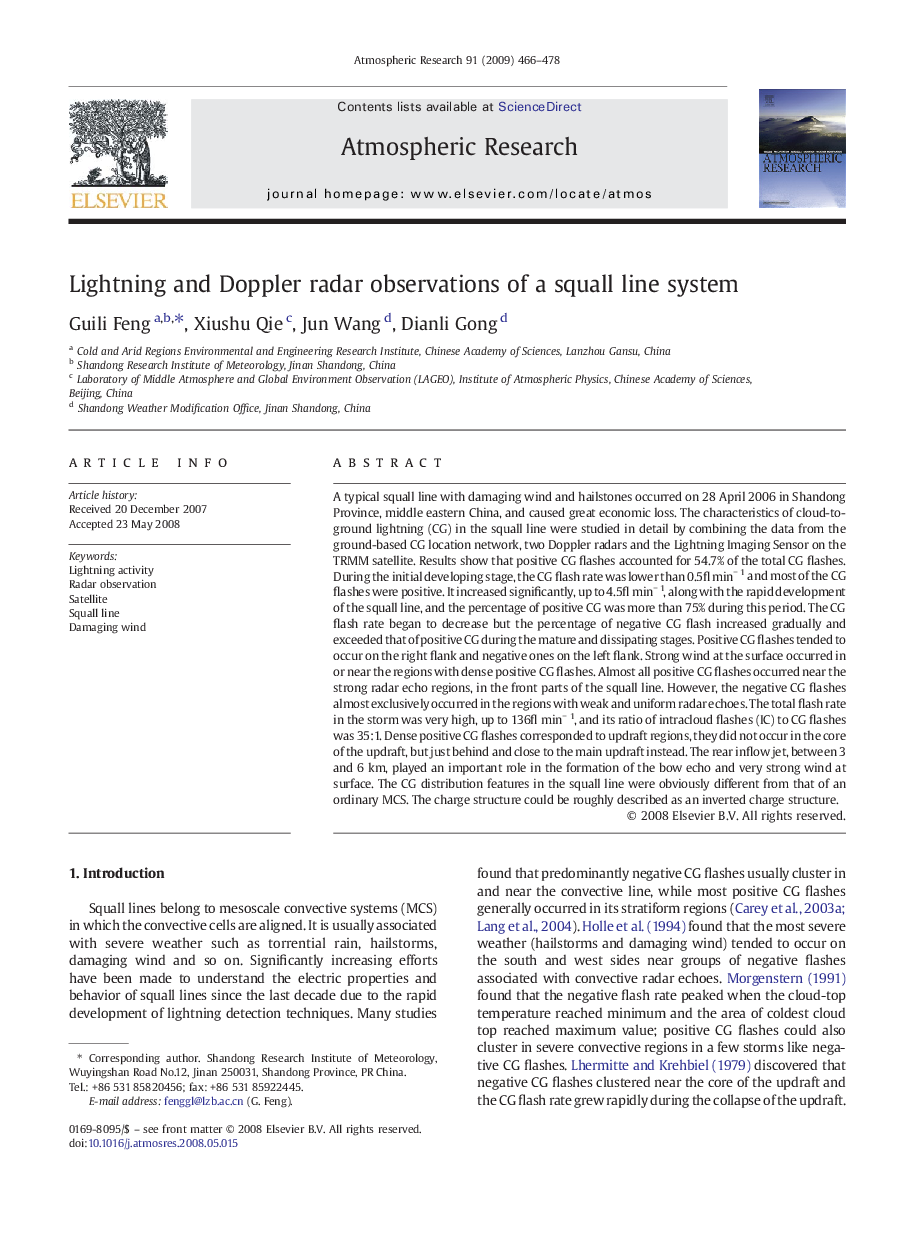| کد مقاله | کد نشریه | سال انتشار | مقاله انگلیسی | نسخه تمام متن |
|---|---|---|---|---|
| 4451035 | 1620570 | 2009 | 13 صفحه PDF | دانلود رایگان |

A typical squall line with damaging wind and hailstones occurred on 28 April 2006 in Shandong Province, middle eastern China, and caused great economic loss. The characteristics of cloud-to-ground lightning (CG) in the squall line were studied in detail by combining the data from the ground-based CG location network, two Doppler radars and the Lightning Imaging Sensor on the TRMM satellite. Results show that positive CG flashes accounted for 54.7% of the total CG flashes. During the initial developing stage, the CG flash rate was lower than 0.5fl min− 1 and most of the CG flashes were positive. It increased significantly, up to 4.5fl min− 1, along with the rapid development of the squall line, and the percentage of positive CG was more than 75% during this period. The CG flash rate began to decrease but the percentage of negative CG flash increased gradually and exceeded that of positive CG during the mature and dissipating stages. Positive CG flashes tended to occur on the right flank and negative ones on the left flank. Strong wind at the surface occurred in or near the regions with dense positive CG flashes. Almost all positive CG flashes occurred near the strong radar echo regions, in the front parts of the squall line. However, the negative CG flashes almost exclusively occurred in the regions with weak and uniform radar echoes. The total flash rate in the storm was very high, up to 136fl min− 1, and its ratio of intracloud flashes (IC) to CG flashes was 35:1. Dense positive CG flashes corresponded to updraft regions, they did not occur in the core of the updraft, but just behind and close to the main updraft instead. The rear inflow jet, between 3 and 6 km, played an important role in the formation of the bow echo and very strong wind at surface. The CG distribution features in the squall line were obviously different from that of an ordinary MCS. The charge structure could be roughly described as an inverted charge structure.
Journal: Atmospheric Research - Volume 91, Issues 2–4, February 2009, Pages 466–478